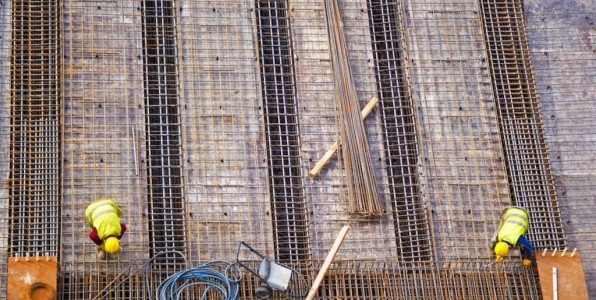7 Innovative Sustainable Building Materials Shaping the Future of Construction

7 Innovative Sustainable Building Materials Shaping the Future of Construction
The post 7 Innovative Sustainable Building Materials Shaping the Future of Construction appeared first on UK Construction Blog.
Sustainability is arguably the most important consideration in the modern construction landscape. It is no longer acceptable for buildings to be just high-performing–they must contribute to the good of the planet as well. With this in mind, architects and construction professionals are using the most vanguard techniques and design principles to create the most environmentally-friendly structures possible.
Fortunately, there are a number of innovative materials that can help bring sustainable designs to life. Keep reading for a look at 7 sustainable building materials shaping the future of construction.
1. Demountable Glass Partitions
The open interior concept is prevalent in contemporary construction. It creates a brighter, more inviting ambiance that is attractive to employees and patrons alike. Open interiors also offer a host of sustainability benefits. Some of the most pertinent include:
- Fewer obstructions for improved natural daylighting and less electricity consumption
- Greater versatility streamlines reconfiguration and reduces construction waste
- Ease of cleaning and maintenance results in less time and energy for upkeep
When privacy and defined space is necessary, modern office partitions can be used to efficiently create offices, conference rooms, or gathering areas. These modular glass partitions maintain the clean, clear aesthetic of the open interior while providing the necessary privacy.
2. Structural Steel

Steel is one of the most important materials in sustainable construction. It is incredibly durable, long-lasting, and weather resistant. At the end of the building’s useful life, steel buildings can often be transported to a new location, limiting construction waste. In the event that demolition is necessary, steel is a completely recyclable product.
Prefabrication techniques are also improving the sustainability of steel structures. Many steel buildings can be fabricated in a controlled factory environment and transported to the construction site. This leads to quick erection that limits error and reduces the risk of lengthy delays and damage due to inclement weather or other types of disaster.
3. Metal B-Decking
More and more buildings are constructing rooftop decks. With the proper roof deck tiles and low-profile commercial railings, they can be the ideal setting for enjoying a change of scenery and catching some fresh air. Advanced green roofs and cool roof systems even have great energy efficiency benefits. They can provide insulation for the building while cooling ambient temperatures to reduce urban heat islands.
To support these more robust rooftops, it is critical to have appropriate structural support. Metal b-decking is a great choice in this regard. Applied to the roofing substrate, it offers shear support to the rooftop. This means that it transfers vertical loads horizontally to the building’s frame. This allows it to accommodate greater loads for ongoing longevity.
4. Cross-Laminated Timber
Cross-laminated timber is a type of prefabricated, solid engineered wood paneling. It provides the classic wood aspect while improving on traditional wood’s limitations. Cross-laminated timber is incredibly lightweight, yet exceptionally strong. It offers elite acoustics, fire resistance, and seismic protection for buildings. It can be used in walls, roofs, floors, and cladding–the same areas as traditional timber but with superior benefits.
5. Soundproofing Features

Modern commercial buildings are increasingly vibrant. Many play host to multiple tenants and include bustling community spaces. While this is good for making the most of resources, it can create a noisy environment.
Contemporary soundproofing materials, such as acoustic wall panels, ceiling clouds, and soundproof door systems, can help limit noise transfer within commercial spaces. They add important soundproofing mass without creating unnecessary bulk that eats into viable space. This can improve tranquility in all corners of the most clamorous interiors.
6. Bamboo

Bamboo can be deployed in many of the same ways as wood. However, it is a much more sustainable option. Bamboo grows densely on small lots. It can be ready to harvest in as little as a few years from sowing. Traditional forests take many decades to produce usable lumber–a rate insufficient to slow deforestation concerns. As such, bamboo furniture, flooring, and paneling is seen as the more eco-friendly option for those buildings wanting wood-look construction.
7. Architectural Louvers
Passive construction is all about using the building site to provide as much heating, cooling, lighting, and ventilation as possible. This reduces reliance on electricity, making for a major leg-up in net-zero construction.
One of the most important materials used in passive construction is architectural louvers. They allow fresh air to flow into the building while restricting entrance of pests, moisture, and debris. More advanced storm proof louvers even protect against blowing precipitation that is introduced directly into the face of the louver. The result is a cooler, fresher interior environment that does not rely so heavily on A/C.
Build for the Future with Sustainable Materials
Creating sustainable structures is a top priority for modern architects and construction professionals. By choosing from any of the 7 sustainable materials listed above, the most eco-friendly buildings can become a reality. For more of the latest trends in sustainable construction, explore the resources at UK Construction Blog for the leading insights in the industry!
Comments are closed